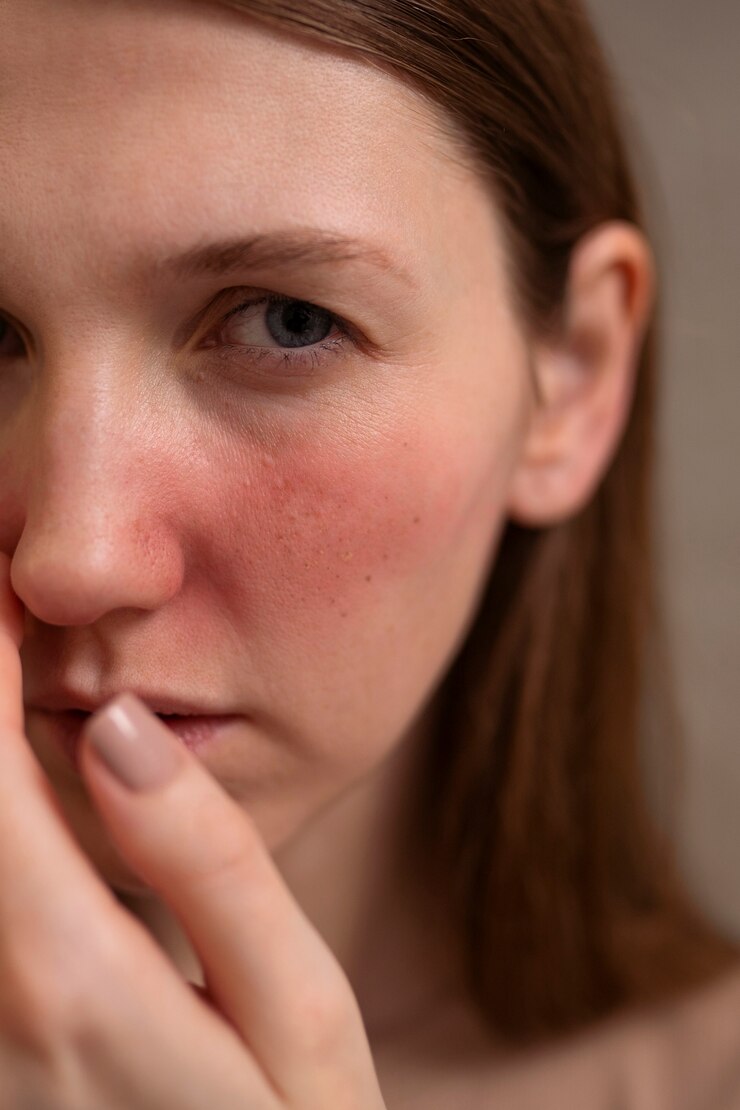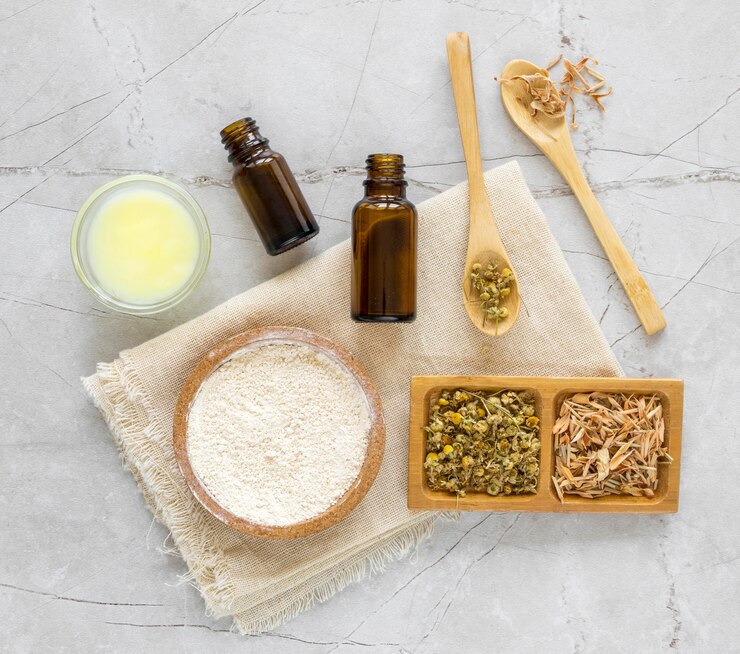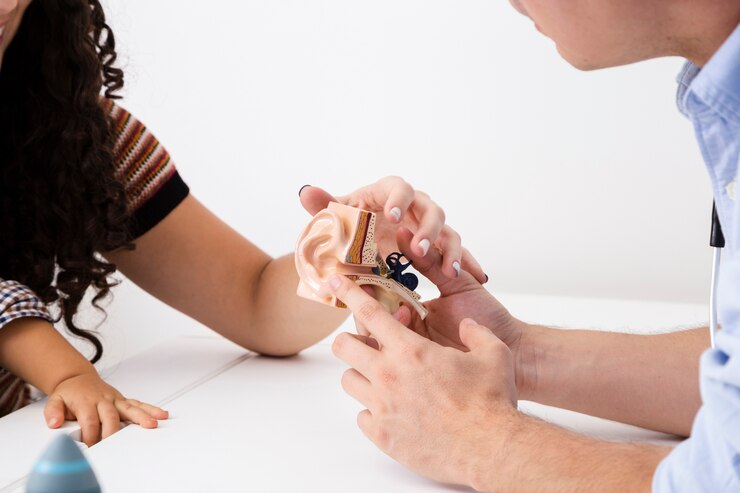
Dealing with redness has always been a part of my life. Despite my healthy habits, I never expected to develop rosacea. I just thought my tendency to blush easily and get rosy cheeks after an intense workout was just part of who I am. Like eczema, there’s no cure for rosacea, only ways to manage the symptoms by reducing the triggers that cause inflammation.
I won’t pretend it’s been easy – it’s not like I just ate some kale and my skin instantly calmed down. I wish it was that simple. Many have told me my skin doesn’t look like I have rosacea, but that’s partly due to my careful use of tinted moisturizer and pressed powder during flare-ups.
There have been many moments of frustration over the years, but I can confidently say that being mindful of my diet and avoiding habits that promote inflammation in the body has kept my skin from getting worse.
Rosacea causes redness on your cheeks, nose, and chin and is quite common among people over 30. It’s a complex condition with no single cause, making it frustrating to address the root of the problem. However, there’s a lot you can do through diet and lifestyle to manage it.
As a nutritionist, I’ve researched rosacea extensively and can confidently say I’ve explored every natural remedy. I’ve chosen not to take antibiotics or use antibiotic or steroid creams because I believe their side effects outweigh the benefits.
In this post, I’ll share dietary advice for managing rosacea. I’ll follow up with another post on nourishing foods you should include in your diet, like ingredients found in this Golden Soup.
**Foods to Avoid If You Have Rosacea**
While this list includes foods that might trigger symptoms, it doesn’t mean you can never enjoy them again. I still eat things like eggplant and seasonal strawberries, just not daily. Some foods, like red wine, are big triggers for me, so I avoid them entirely. Understanding your unique triggers will help manage your symptoms.
**Rancid Oils (Most Vegetable Oils):** Oils like corn, cottonseed, soybean, canola, sunflower, and safflower, especially those found in clear plastic bottles, should be avoided. These oils undergo extensive processing, are high in omega-6 fatty acids, and can contribute to inflammation. Choose organic, cold-pressed oils like olive, avocado, pumpkin seed, and coconut oil, preferably packaged in dark glass bottles.
**High-Histamine Foods:** Some foods are naturally high in histamine or cause the body to release histamine, which can worsen rosacea by causing blood vessels in the skin to widen, leading to increased redness. I take quercetin, a phytonutrient that helps reduce histamine release. Everyone’s triggers are different, so it’s worth experimenting to see which foods affect you.
**Dairy:** Many people are sensitive to dairy, and it can exacerbate rosacea by causing inflammation. If you’re sensitive to cow’s milk, sheep or goat’s milk might be better options as they contain A2 casein protein, which tends to be less irritating.
**Gluten:** Gluten can increase gut permeability, leading to inflammation and aggravating skin conditions like rosacea. Many people with gastrointestinal issues also experience rosacea, as gluten can make these problems worse.
**Sugar:** Consuming sugar can worsen inflammation and irritate the gut, making rosacea flare-ups more likely. Try to avoid added sugars, even those labeled organic.
**Alcohol:** Alcohol increases inflammatory compounds, causing facial redness due to the dilation of small blood vessels.
**Hot Drinks:** Hot beverages might trigger a flare-up, so it’s important to be mindful of what your body can handle.
**Spicy Foods:** Foods with capsaicin, like chili peppers and hot sauce, can cause a warming sensation in the skin, potentially worsening rosacea.
**Cinnamaldehyde Foods:** This compound is found in foods like cinnamon, tomatoes, citrus fruits, and chocolate. It may trigger rosacea in some people, so be aware of how these foods affect your skin.
Remember, managing rosacea is about awareness, not perfection. Learn what causes your flare-ups, manage your symptoms with confidence, and allow yourself occasional indulgences without guilt.
I’ll continue to share more about helpful foods, supplements, and lifestyle factors to consider in your journey toward calming your skin.
Wishing you healthier skin,
Joy
—
If you’d like advice on foods beneficial for calming keratosis pilaris, please let me know!


